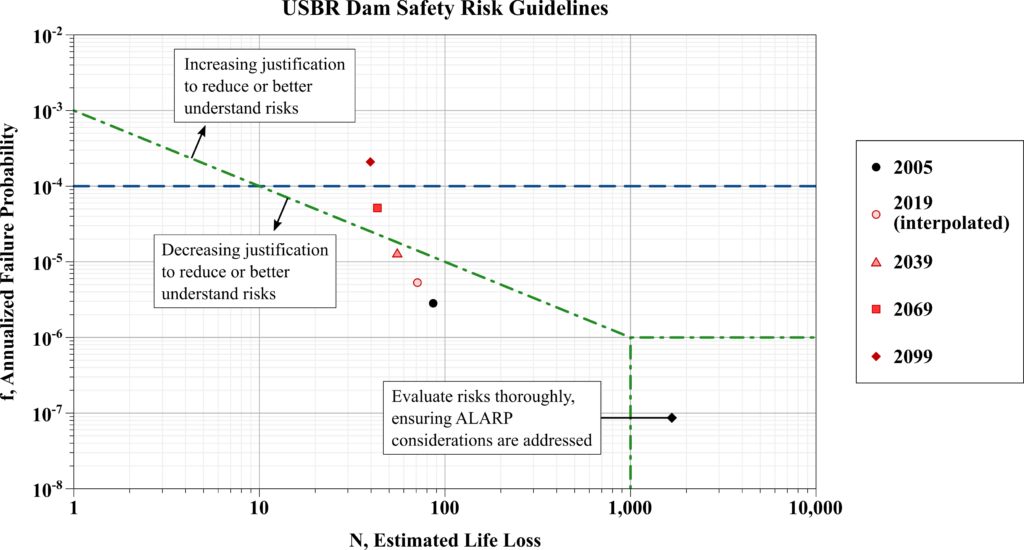Dams are critical infrastructures whose safety must be properly managed. Traditional decision-making approaches often assume the stationarity of factors defining risk. However, dam risk is susceptible to evolve with time. Risk can no longer be considered a static but a time-dependent concept which cumulative value must be reduced for different timescales. A broader perspective to dynamically evaluate time issues in the prioritization of measures is thus required.
A new approach has been proposed in this paper (Comprehensive decision-making approach for managing time dependent dam risks) for dam risk management in the long term that considers the potential evolution of risk. A new time-dependent risk indicator that allows assessing the efficiency of adaptation measures in optimally reducing dam risks has been defined: the Aggregated Adjusted Cost per Statistical Life Saved (AACSLS). Its use makes it possible to better design risk reduction measures and to plan the implementation sequence that maximizes their effectiveness.

The methodology has been applied to the case study of a Spanish dam under the effects of climate change. Different risk reduction measures have been proposed and their effects have been analyzed for a specific time horizon. The use of the AACSLS indicator has allowed identifying the prioritization of measures that optimizes the allocation of economic resources in the long term.
Reference: Fluixá-Sanmartín, J., Escuder-Bueno, I., Morales-Torres, A., and Castillo-Rodríguez, J. T. (2020). Comprehensive decision-making approach for managing time dependent dam risks. Reliability Engineering & System Safety, 203, 107100.
Link to this article in Reliability Engineering & System Safety
This article can be downloaded here:


